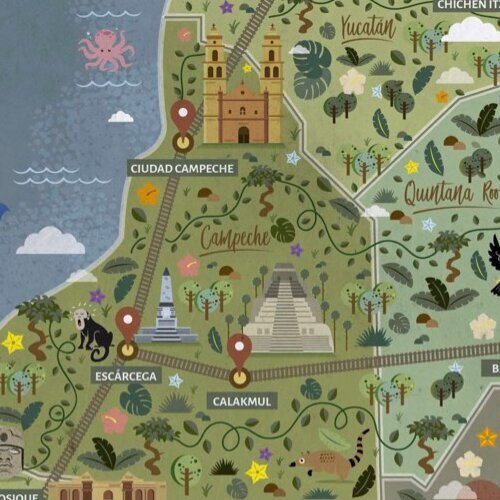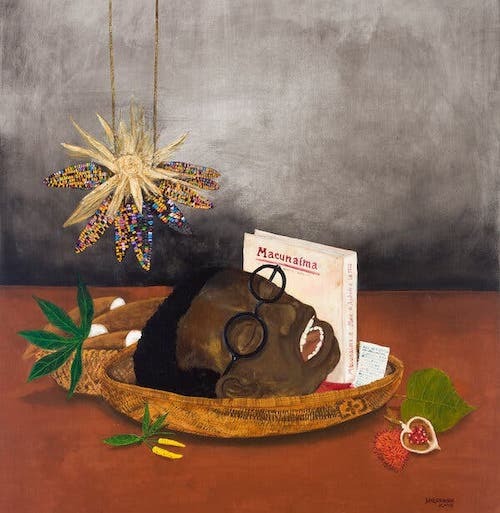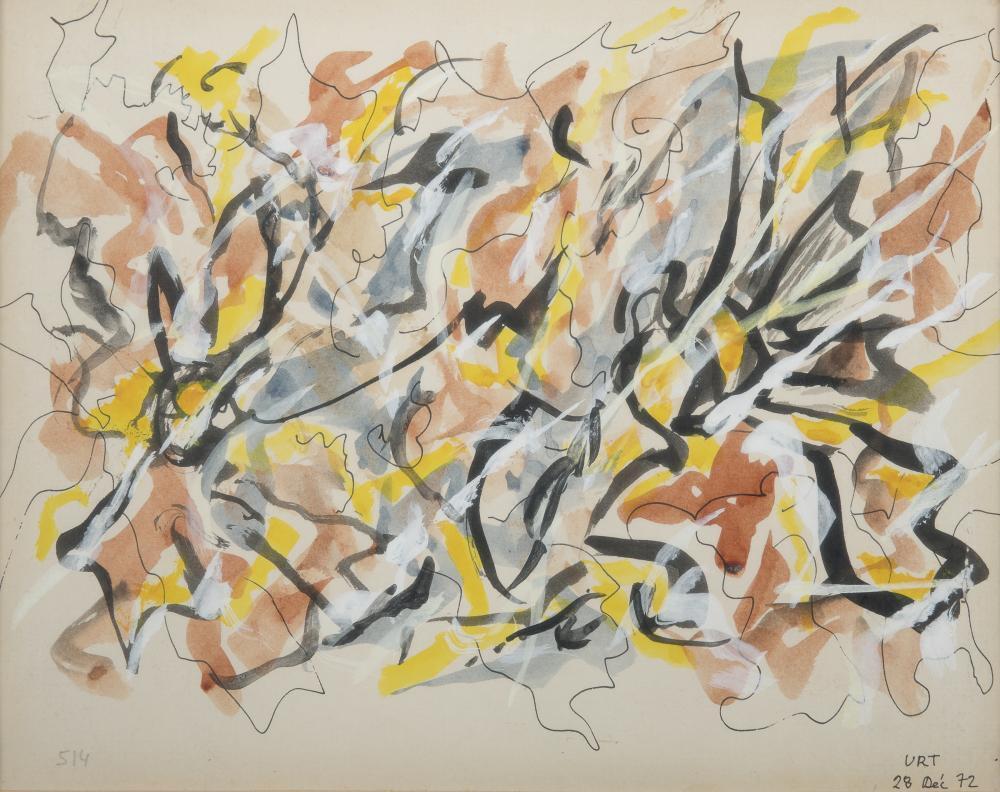Reflexive Extractivist Aesthetics
“The factory produced juices.
And the juices, in turn, produced art.
That is to say,
the profits from the juice sales
funded the largest art collection
in the continent.”
Valeria Luiselli, The Story of My Teeth
In 2019, protestors interrupted the closing ceremony of the tenth edition of Oaxaca FilmFest. At issue was the festival’s sponsorship by Compañía Minera Cuzcatlán, a Mexican subsidiary of the Canadian transnational Fortuna Silver Mines, which holds 26 mining concessions in the region. Wielding signs calling for “a cinema and territory free of mining,” the protestors criticized the festival for taking on a partner “responsible for multiple violations to the rights of Indigenous peoples and communities, and violations of international human rights treaties,” as they put it in an open letter. 1 In addition to obtaining concessions to mine Indigenous lands without informed consent, Minera Cuzcatlán’s operations in Oaxaca have resulted in numerous irreparable harms, including dispossession, the murder of Zapotec land defenders in San José del Progreso in 2012, and the contamination of the Coyote River by toxic tailings in 2018.
The protestors at Oaxaca FilmFest called attention to how extractivist entities like Minera Cuzcatlán strategically partner with cultural institutions to improve their public standing. This has been a recurrent tactic deployed by Minera Cuzcatlán to offset opposition to regional operations. The company is also a regular sponsor of the Guelaguetza festival, Mexico’s largest Indigenous cultural celebration annually held in Oaxaca City. The protestors underscored the stark contrast between Minera Cuzcatlán’s purported support of Indigenous and Mexican cultural production and the material violence it enacts on these same communities. This is a strategy identifiable as “artwashing,” or “the custom of using art and culture to launder ill-gotten gains and predatory practices” through the use of “profits [that] stem from industries that harm the very communities that are supposed to enjoy and benefit from museums.” 2 The activist call for “a cinema and territory free of mining” powerfully posits that contesting extractivism goes hand-in-hand with a rigorous reassessment of how cultural production itself is enmeshed in extractivist economies. It urges us to attend not only to how cultural production can represent the harms of extractivism or challenge extractive ideologies, but to interrogate how extractivist industries subtend the very infrastructures of cultural production.
The protestors were ultimately successful. Shortly thereafter, Oaxaca FilmFest cancelled Minera Cuzcatlán’s sponsorship. 3 This 2018 protest spearheaded by Red de Resistencia y Rebeldía Colmena, Agua para Todxs, and the Red Mexicana de Afectados por la Minería, among other organizations, aligns with ongoing efforts throughout the world to rethink the material conditions of cultural institutions. The art collective Liberate Tate, for example, successfully campaigned for the Tate Museum to sever ties with BP in 2016 as part of its efforts to “free art from oil.” 4 More recently, the social movement known as Strike MoMA has drawn attention to trustee Gustavo Cisneros’s ties to Barrick Gold Corporation, the world’s largest gold mining company. 5 These movements push cultural institutions to extend their stated commitment to decolonizing and radicalizing art to the forces that fund and sustain them. They make participants, like the international filmmakers who attended Oaxaca FilmFest, more aware—even to the point of discomfort—of the local histories and politics that frame purportedly neutral cultural institutions and transnational events. 6 They draw parallels between the imaginative and political work of disentangling territory from its extractivist instrumentalization and the institutional work of disentangling cultural infrastructures from those of extractivism.
So how have artists themselves called attention to the entanglement of art and extractivism in their work? Unlike the protestors of Oaxaca FilmFest who advocated for a total break between the cultural institution and extractivist enterprise, in this article, I attend to artists who engage with the contradictions inherent to making anti-extractivist art within institutional and sociopolitical contexts circumscribed by extractivist capitalism. I call this materialist attention to art’s ties to extractivism “reflexive extractivist aesthetics.” Reflexivity broadly refers to a self-critical posture relative to one’s own actions and to the frameworks of thought that structure the social world. As I see it, extractivist reflexivity is typically expressed in one of two ways: as a critical reflection on the materials that constitute the work and its conditions of production, or as a reflexive consideration about the system that gives rise to the work and in which it circulates and is consumed. It is a form of critique that calls attention to itself—to its materiality, financing, institutional structuring, or participation otherwise in the circuits of commodities and capital it seeks to illuminate or diagnose. In this sense, extractivist reflexivity is analogous to what Garnet C. Butchart calls “redoubling” in documentary film, in which the documentarian includes reflexive shots of the filmmaker’s camera, cuing the audience in to the constructed nature of the film they are watching. 7 As a technique of “unconcealment,” redoubling troubles the documentary’s facile association with objectivity by drawing attention to the filmmaker’s particular perspective.
Similarly, rather than diagnose extractivism from a vantage that insists upon its externality, reflexive approaches in anti-extractivist art acknowledge the artist’s embeddedness within what Jason Moore terms “world-ecology,” or the spatialized and racialized appropriation of nature and labor that enables the accumulation of wealth. 8 It asserts not a totalizing view of the capitalist world-ecology, but a myopic one that gestures toward the system from a situated space of entanglement. It follows that the ethos of reflexive extractivist aesthetics is one of critical proximity rather than critical distance from extractivism as an organizing system or infrastructure of modern life. Reflexive extractivist aesthetics thus runs parallel to institutional critique, a form of critique that stages “social conflict from within the privileged space granted to art,” not just as a form of “intellectual recognition but in a social praxis.” 9 Extractivist reflexivity stresses the artist’s participatory role in the production of commodities, exposes continuities between the art world and the world-ecology, and juxtaposes the possibilities of artistic critique with its political limitations, all as a means of considering what it means to make art and live in a world structured by extractivist capitalism.
To demonstrate how reflexive extractivist aesthetics operate in contemporary Mexican visual art, in this article I look to three visual artists: Fritzia Irízar, Débora Delmar, and Minerva Cuevas. These artists reckon with art’s implication in extractivist systems, both in terms of bolstering its desires and emerging from within its financial ecosystem. Rather than position art as solely counter or opposed to extractivism, these artists lay bare the collusions, implications, and frictions that embroil fine art and extractivism. To combat the naturalization of art’s emergence from and circulation within circuits of extractivist capital, they use reflexive techniques that index this vexed entanglement.
Reflexive Extractivism and the Implicated Subject
Before diving into the works at hand, I want to further clarify the stakes. If art is often considered by scholars within the growing field of Latin American ecocriticism primarily for how it depicts extractivism’s ecological and social consequences, the artists considered here leverage this critical imaginative capacity at the same time that they acknowledge their institutional implication in extractive circuits. Building on longstanding traditions of institutional critique and efforts within the art world to think about the slippage between the work of art and the commodity, they extend this reflexive mode of inquiry to consider how contemporary artistic production is situated within extractivist circuits of consumption and exploitation.
This shifts our understanding of the aesthetics of extraction beyond the representation of energy regimes and the environment, to recognize extraction as an ontological question at the heart of artistic production. 10 Such a move takes implication as the starting point for thinking about cultural production in the era of climate change. By foregrounding implication—meaning the involvement, association, entanglement, or inculpation of art in extractivism—I do not intend to promote an impossible ideal of artistic purity that somehow manages to exist outside of the system. Rather, the term “implication” signals the insufficiency of the victim/victimizer binary when it comes to historical phenomena like extractivism.
Michael Rothberg has developed the term “implicated subject” to talk about the complexities of living in late-stage capitalism, whose workings “at a global scale depend on relations of exploitation that systematically produce inequality as well as psychic and physical harm.” 11 Extractivism can be counted among these relations of exploitation, as can climate change, both of which have been unevenly produced and experienced, with disproportionate harmful effect for those who bear little to no responsibility for its production. The lop-sided responsibility for planetary crisis by transnational corporations cannot be understated. Studies suggest that 75% of industrial carbon emissions can be traced back to just 90 corporations. 12 But following Rothberg, the concept of implication gets at how these corporations are sustained by belief and governance systems upheld by countless people, people who are “participants in and beneficiaries of a system that generates dispersed and unequal experiences of trauma and well-being simultaneously.” 13 I argue that the recognition of implication, rather than, say, perpetration or complicity, drives reflexive interventions in extractivist aesthetics, as artists reflect on what it means to be situated within infrastructures of cultural production that are financed and upheld by extractivist capital, whether in the guise of their nonprofit corollaries or through public funding reliant on the continued profitability of oil. Rothberg proposes that reckoning with implication entails a renewed consideration of collective political responsibility, even for situations for which we are not directly or indirectly responsible but that are “facilitated by a network of implicated subjects,” and, as such, demand new manifestations of political solidarity, organized around difference rather than identification. 14
Finally, my use of the term “extractivist” in the discussion of reflexive extractivist aesthetics (or extractivist reflexivity) merits brief mention. I have chosen to use the word “extractivist” rather than “extractive” to signal the gulf between the two. Whereas extraction refers to the physical removal of earthly matter, for its part, extractivism refers to the logic or ideology that subtends its systematic, scaled-up, global implementation. 15 Extractivism describes the mass extraction of raw materials for export so that they can be processed and utilized elsewhere. This system originated with the colonial pillaging of land and labor as the means of funding the expansion of empire, indelibly shaping the formation of modern capitalism. 16
By signaling the “extractivist” aspect of reflexive aesthetics, I indicate that the artists considered here are not interested in a wholescale rejection of extraction, a cultural practice that long predates colonialism and is not necessarily tied to capitalist accumulation through the instrumentalization of nature and labor. Nor is extraction automatically coterminous with environmental destruction. As Marisol de la Cadena has noted, Indigenous miners in the Andes see a stark distinction between mining practices that maintain “the ayllu, the relational emplacement through which runakuna [people] are with with earth-beings [mountains]” and the open pit mining practiced by transnationals that effectively “decapitates” these relational assemblages, as Gisela Heffes bluntly puts it. 17 By using the term “extractivist,” I stress that these pieces do not advocate for an artistic practice free of environmental impact. After all, visual art is inherently material--as is the process of writing this article on a laptop and publishing and circulating it on the internet, for that matter. 18 While reflexive techniques can generatively point to the “complex earthly entanglements” of artmaking and the “ontological consequences of [the] aesthetic endeavor,” with this article, I aim to identify something distinct that is less focused on the artist’s individual responsibility or the material impact of the individual work. 19 Reflexive extractivist aesthetics are instead more interested in calling attention to systemic implication in extractivist economies and logics.
Extractivism in the Twenty-First Century
Booming mineral prices at the turn of the twenty-first century buoyed by demand from China incentivized governments across Latin America to adopt or readopt extractivism as a model for economic development. Broadly defined, extractivism describes the large-scale exploitation of natural resources primarily destined for export, a practice established during the colonial era and by which Europe was able to finance its wars, imperial expansion, and industrialization. Today, while governments in Latin America across the ideological spectrum have embraced what Maristella Svampa calls the “commodity consensus,” or the export of raw materials as a central economic pillar, they have done so under different models. 20 In Mexico, when it comes to mining, the classic extractivist model has prevailed since the 1980s. Established in the nineteenth century, the classic model is one in which the state grants concessions to transnational corporations to exploit designated resources without any mechanism that allows it to capture rents from these activities. Between 2000-2012, the administrations of PAN presidents Vicente Fox and Felipe Calderón gave out thousands of mining concessions to transnational firms. These concessions accounted for massive tracts of land—nearly a third of the country’s territory—and were doled out at rock-bottom prices without the consent of local peoples. 21 In response, communities throughout Mexico have resisted the imposition of extractivist projects on their lands, making Mexico the country with the greatest number of ongoing mining conflicts in all of Latin America. 22 To suppress grassroots opposition, mineral-rich regions have been increasingly militarized, with public and private security forces mobilizing to intimidate land defenders. This violence, Dawn Paley has shown, has often been dissimulated under the pretense of the “drug war.” 23
In the current MORENA administration, President Andrés Manuel López Obrador (AMLO) continues to center extractivism as essential to national development and economic growth, but in a way that shifts toward the neoextractivist model adopted by many left-leaning politicians in Latin America. 24 Unlike the classic model of extractivism, the neoextractivist model imposes more regulations on transnational partners and captures rent from these activities, which are then redirected to regional social programming like infrastructure and education. To clarify the difference between the classic and neoextractivist models, Tetreault uses the helpful metaphor of carrot and stick. 25 Whereas militarization and violence are the stick that forcibly imposes extractivism, the neoextractivist model redirects a portion of rents from the industry back to host regions as an enticing carrot to dampen opposition. Further elaborating on the carrot, Verónica Gago explains that the neoextractivist model establishes a logic in which “anyone who opposes the extractive model [can be criticized as opposing] financing poor populations.” 26 The redirection of funds from extractivism to social programs, education, and cultural initiatives, Gago posits, formulates a model of “citizenship through consumption as a palliative or reparation that is provided against neoliberalism.” 27 In other words, it further implicates social and cultural benefits with extractivism.
The wide adoption of extractivist policies by governments across the political spectrum signals the extent to which this model has become naturalized as inevitable. Contemporary extractivist policies echo and reify their colonial inscription, particularly the underlying myth of El Dorado, a promissory discourse that Charlotte Rogers explains hinges on the notion that the efficacious exploitation of nature will deliver future happiness and wealth to the seeker. 28 Although this fantasy has been endlessly deferred and debunked by historical experience, it continues to hold great sway. Eduardo Gudynas writes that “despite all evidence on negative impacts and the proliferation of citizen resistance, extractivism continues to be defended by governments, a large part of academia, and citizens,” to such an extent that “extractivism is an idea about development that is deeply engrained and beyond rational evidence or argument; it is a belief of faith and a situation peculiar to an extractivist theology.” 29 In the twenty-first century, extractivist dogma amalgamates with the acceptance of neoliberalism as “common sense.” 30 Within this totalizing framework, Irmgard Emmelhainz observes, all aspects of existence are interpreted in economic terms, and populations and environments are treated as disposable in the name of profit. Individuals think of themselves as consumers, and of the earth as a limitless repository to be leveraged for private, rather than collective, gain.
Fritzia Irízar’s Performance of Extractivist Aesthetic Mediation
The implication of the fine art world with extractivist capital is at the heart of Fritzia Irízar’s work. Irízar is a visual and performance artist from Culiacán, Sinaloa, who has probed the abyss between use value and exchange value over the course of her career. Her 2016 exhibit Golden Green / Greening Gold serves as my opening example. Golden Green debuted at the Arredondo \ Arozarena gallery in Mexico City in 2016. There Irízar enacted a fictional transnational mining corporation—thus the title in English—that presents gold mining as a logical and even sustainable endeavor. The fictional company’s slogan, “Because it matters to us,” emulates bland corporate platitudes like those employed by the aforementioned Minera Cuzcatlán. 31 At the same time, the slogan invites spectators to think about what it is that really matters to “us,” and whether or not we might conjure up other shared values outside the realm of capital.
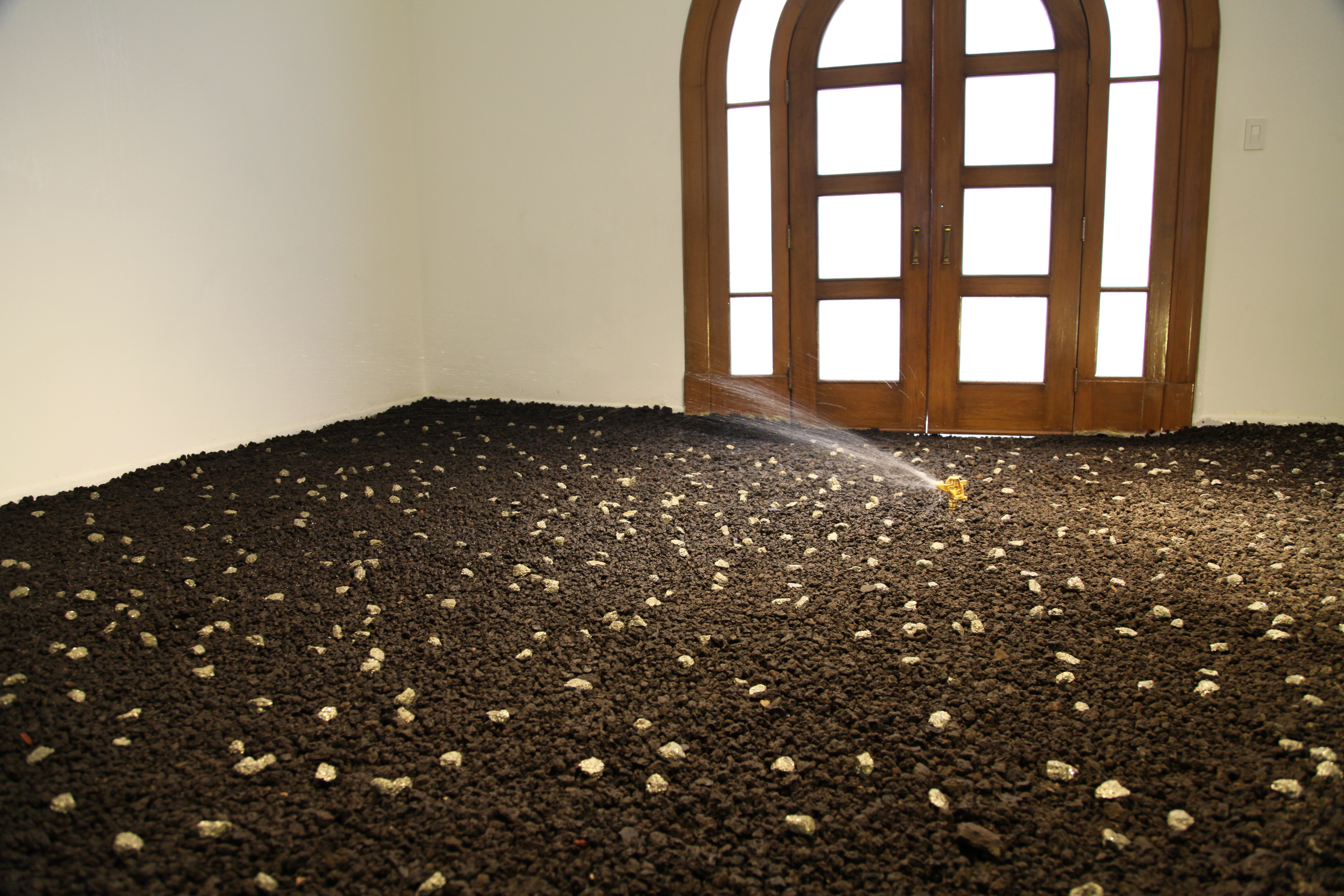
FIGURE 1. Fritzia Irízar, Sin título (Greening Gold), Golden Green / Greening Gold, Arredondo \ Arozarena, 2016. Image courtesy of the artist.

FIGURE 2. Fritzia Irízar, Sin título (Greening Gold), Golden Green / Greening Gold, Arredondo \ Arozarena, 2016. Image courtesy of the artist.
Characteristic of Irízar’s multi-modal approach, Golden Green includes a variety of components. It centers on a gilded sprinkler that fruitlessly irrigates an expansive field of tezontle rocks mixed with pyrite for the purported purpose of growing gold (Figures 1 and 2). The piece emulates how gold mining publicly positions itself as a sustainable enterprise, something that can be cultivated, rather than a finite resource whose extraction requires vast amounts of labor, land, chemicals, and water. This centerpiece is complemented by other absurdities, like a lab-coated actor who carefully gilds the cast of a bird skeleton in gold in Sin título (Extracción), performing in real time for gallery visitors how the extinction of nonhuman species is superficially blunted by its aesthetic fetishization (Figure 3). These fantasies of gold’s harmonious cultivation and the aestheticization of extinction (which implies that nonhuman death is valued more than nonhuman life, monumentalized within the space of the gallery) are juxtaposed with a looping video of polluted ocean water and a labyrinth of tubing and sprinklers in reference to the toxification and depletion of aquifers by gold mining.
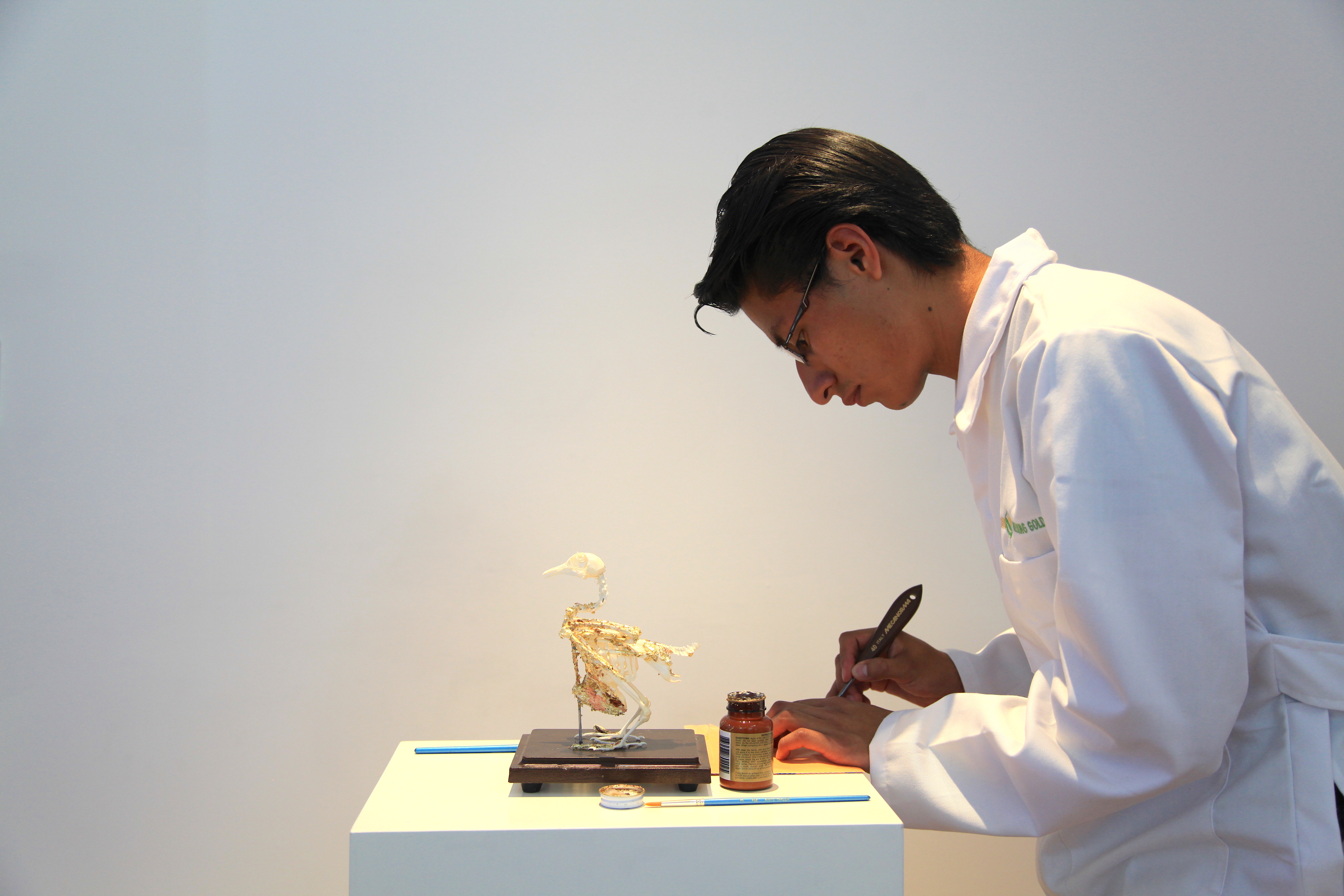
FIGURE 3. Fritzia Irízar, Sin título (Extracción), Golden Green / Greening Gold, Arredondo \ Arozarena, 2016. A lab-coat clad actor gilds a bird skeleton in gold. Image courtesy of the artist.
While mining is often justified by the state for its purported economic boost to the surrounding community, studies find industry benefits do not outweigh other associated costs such as water contamination, environmental degradation, corruption, and conflict. 32 Gold mining in northern Mexico, the region that Irízar profiles, requires the use of thousands of gallons of water each second. The use and abuse of water by mining transnationals is particularly devastating for a region in which clean water is already scarce, and ever more so because of intensifying drought brought on by planetary climate change.
Irízar is quick to make the connection between industry exploitation and aesthetics, observing that over 80% of extracted gold is used to make jewelry. By staging the gallery as both the origin and the destination of gold production, Irízar plays with how the art world figuratively and materially cultivates desires that rely on the willful concealment of their means of production. As Irízar observed in an interview with Revista Gatopardo, “The art world is definitely not exempt from this impetus for greed, definitely not, I don’t think that any of us are removed from these dynamics, we are all complicit with the state our society finds itself, this irrational, frivolous and profoundly disrespectful society, in which it is difficult to change our habits.” 33
In tandem with reflexively signaling how institutions like the art gallery consecrate extractivist values through the objects they display, implicitly legitimizing the processes by which these objects are produced, Golden Green also employs reflexive techniques to prompt visitors to toggle between a structural critique of extractivism and the consideration of one’s implication within these value systems. As visitors enter the Arredondo \ Arozarena gallery, they are greeted by another lab-coat clad actor, this time in the role of archivist. The performer asks each visitor to remove all items of gold jewelry on their person so that they might be weighed, assessed, and registered for the archive. The archivist then invites visitors to leave these items behind so that they might be placed within the irrigated tezontle field to propagate. The absurdity of this invitation to leave behind one’s valuables in the gallery in exchange for the empty promise of future returns duplicates the logic of negative reciprocity at the heart of transnational mining in Mexico. As Claudio Garibay and Alejandra Bazaretti explain, transnational corporations extract “gold with impunity without offering anything in return.” 34 Irízar’s invitation to leave behind one’s jewelry, essentially gifting it to the fictional corporation through the legitimizing conduit of the gallery, exposes extractivism’s unjust logic, as well as how art institutions mediate the aims and messaging of the corporations that financially back them. At the same time, it prompts visitors to reflect on the environmental and human costs of their quotidian wearables and their emotional attachments to them. Why do we value these items over the wellbeing of others and the planet? How might we form other desires and attachments? The performative invitation to the public to recognize embeddedness in extractivist circuits through the corporeal gesture of identifying these objects on our bodies situates this piece within the realm of reflexive extractive aesthetics.
In interviews, Irízar stresses that “Golden Green” is “not an ecological piece.” 35 The distancing of her work from environmentalism, in spite of its explicit critique of mining’s environmental degradation, is attributable to how environmentalism has been coopted by bourgeois neoliberalism in Mexico. 36 Incubated by urban elites and subsequently institutionalized in the Secretaría de Medio Ambiente y Recursos Naturales (Semarnat), neoliberal environmentalist policies pursued since the 1990s have frequently been amenable to the interests of corporate capital, while at the same time compounding existing inequities and marginalizing the poor. Matthew Vitz points to initiatives to “green” Mexico City that razed squatter settlements to protect forests, but left luxury suburbs intact. 37 Similarly, green energy initiatives like the establishment of wind farms in the Isthmus of Tehuantepec have merely replicated longstanding exploitative logics of dispossession. 38 The critique of neoliberal greenwashing as another mask that perpetuates the underlying logic of accumulation by appropriation is evident in Irízar’s title Golden Green / Greening Gold, which positions “gold” and “green” as mutually reinforcing and even interchangeable symbolic categories.
Irízar’s negation of the ecological character of her work can also be understood as indicative of the extent to which ecological aesthetics are assumed by critics and artists alike to be primarily preoccupied with the environmental consequences of extractivism, rather than the products and desires that it mobilizes. What interests me about the reflexive elements in Irízar’s and others’ work is their divergence from what we have come to expect from the evidentiary focus of extractivist aesthetics in favor of a more materialist pursuit of what Marx has called the “social hieroglyphic,” or “the secret of our own social products.” 39
An earlier project by Irízar takes the implication of artists and extractivism one step further. In her work, Sin título (Naturaleza de imitación) (2012), Irízar collected hair from willing Rarámuri donors from Sierra Tarahumara, a community that was at the time experiencing a period of unprecedented drought and a correlated rise in hunger and suicides (Figure 4). She shipped the collected hair off to Infinity Diamond, a U.S. company that fabricates diamonds from the carbon contained in hair follicles. The resulting diamond was displayed at the 9th Mercosur Visual Arts Biennial as an unexpected portrait of hunger and the cruelty of our values: juxtaposing the diamond’s high valuation with the lack of value placed on human life in capitalist praxis (Figure 5). Viewers who came across the diamond at the biennial, gazing down upon it in its case, would be at first unaware of its process of production until reading the accompanying caption and photographic documentation of Irízar’s process. By transmuting Indigenous bodily vulnerability into a fine art commodity, Irízar purposefully echoes the troubling ethics of luxury goods, whose enjoyment is dependent upon the erasure of their production.

FIGURE 4. Fritzia Irízar, Sin título (Naturaleza de imitación), 2012. Image courtesy of the artist.
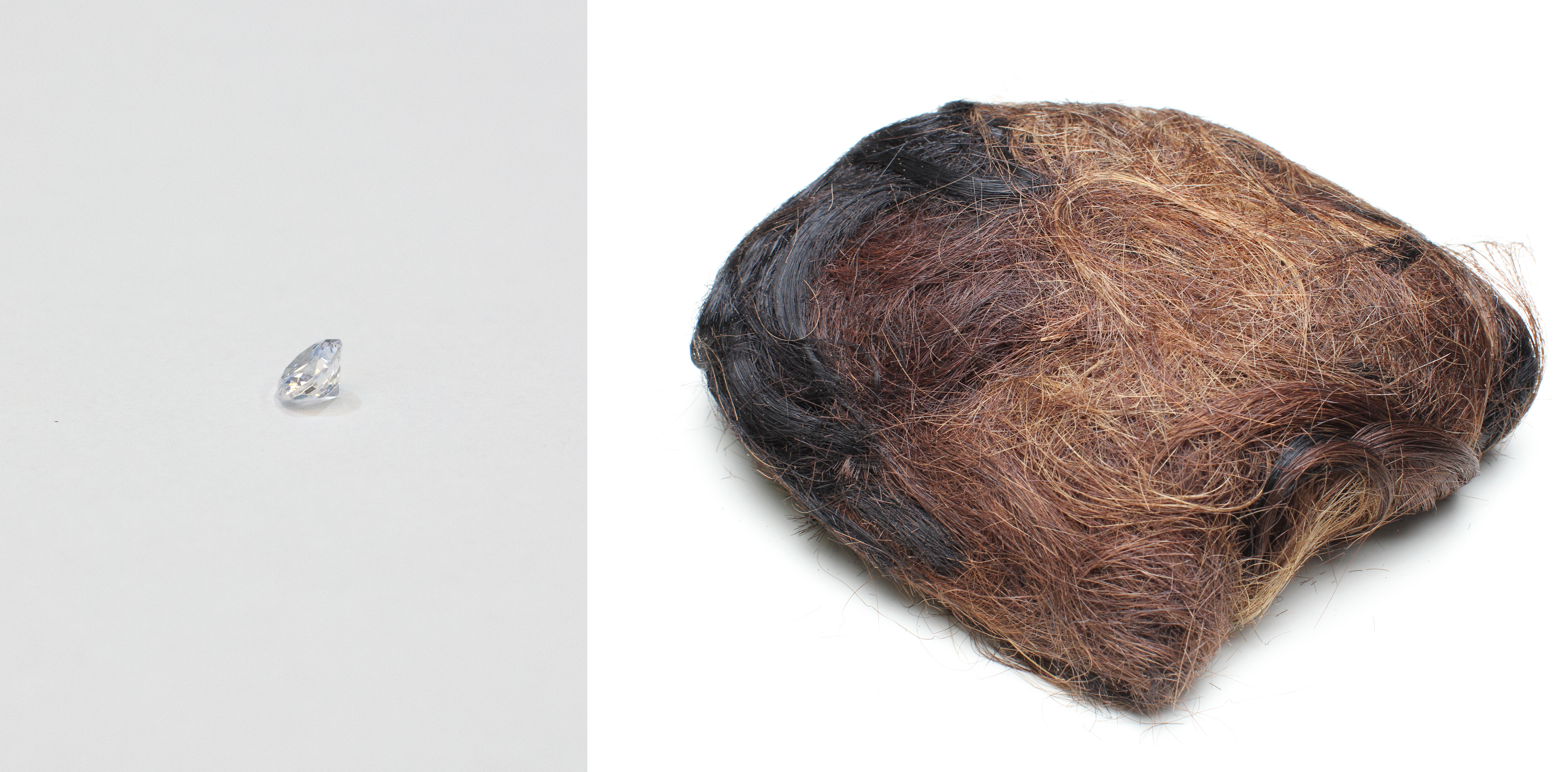
FIGURE 5. Fritzia Irízar, Sin título (Naturaleza de imitación), 2012. Image courtesy of the artist.
This critique is not only directed at the well-heeled public that attends the Mercosur Visual Arts Biennial. It is also a reflexive critique of the artist herself. As the work’s author, Irízar, a mestiza artist, accumulates cultural capital on the basis of the bodily contributions of her Rarámuri collaborators and mediates the space between Indigenous communities and biennial publics. Sin título (Naturaleza de imitación) thus emulates extractivist praxis, the appropriation of Indigenous labor and its abstraction into commodities, in a self-reflexive nod to the artist’s implication in racialized and spatialized flows of culture and capital. Of course, the consent of Irízar’s Rarámuri collaborators and their explicit inclusion in the final piece makes Sin título (Naturaleza de imitación) less a case of cultural extractivism than a dramatization (or imitation, as the title suggests) of its logic. 40 As a reflexive piece, it is a discomfiting and mischievous exercise that makes literal the artist’s role as a producer of commodities, an extractor of cheap labor and nature, so that it can take flight on the global stage. The resulting diamond is thus multivalent: a critique of the symbolic value the diamond holds for those that covet it, a commodity that veils its origins, an exercise in the transmutation of human and nonhuman matter, a collaboration between artist and community, and a horrific materialization of the socioenvironmental conditions endured by Indigenous communities in Mexico.
Such provocations have led critics to affirm that Irízar traffics in the “taboo,” and to wonder if her pieces replicate the problematic ethics that she purports to critique. 41 One work displayed in Mazatlanica, Irízar’s 2019 exhibit at the Museo Universitario de Arte Contemporáneo (MUAC), sparked similar debate: an aquarium containing a Maquech Yucatan beetle adorned in jewels. A MUAC Instagram post of Sin título (Makech) received over 50 comments by users worried that Irízar’s recreation of this Maya custom-turned-souvenir constituted a form of animal cruelty. (By contrast, most MUAC posts typically receive only a handful of comments.) The outcry was not directed at the custom’s transformation into a tourist attraction that has pushed the Maquech beetle population to possible extinction, but at its inclusion in the museum. 42 And yet this is the point. A voiceover in the accompanying video of an overturned beetle struggling to upright itself against the jeweled counterweight narrates: “this living creature…literally bears the burden of our dark dreams of wealth.” 43
The blowback over the Maquech “living jewel” illustrates Irízar’s end game, a forced demystification of the commodity. A displayed diamond, quite at home in a museum, becomes horrific upon the revelation of its provenance: the hair of malnourished Rarámuri. The beetle, out of place in the fine art museum, reflexively draws attention to the dislocation of nature in service of cultural production. The aesthetic object reveals not only the disjunction between production and value, but also its unsettling reification in works of art in galleries in museums
Extractivist Art Funding: the FEMSA Biennial and Débora Delmar
The reflexive recognition of art’s implication in extractivism is an important development as environmentalist art becomes more commonplace because it indicates that art not only has a responsibility to represent the consequences of extractivism, but to recognize the structural role of extractivism in the world of fine art, in terms of its logics, materiality, and funding. I now turn to this latter question by looking at extractivist interests in the funding and institutionalization of contemporary visual art in Mexico.
The rise in environmentalist cultural production in Mexico is not only attributable to the increasing urgency of issues like climate change, but also to their institutionalization as topics of concern. The FEMSA Biennial is one such space. Established in 1992 in Monterrey, the FEMSA Biennial is considered the most important visual arts competition in Mexico. Significantly, it operates in “a decentered part of the country,” as exhibit coordinator Marcela Torres notes, bringing fine arts to audiences beyond Mexico City. 44 In recent years, several FEMSA Biennials have centered on environmental themes, including “Poetics of Decrease: How to Live Better with Less” in Monterrey in 2016, and “We Were Never Contemporary” in Zacatecas in 2018 in reference to Latour’s famous turn-of-phrase. Fritzia Irízar’s work with pearls in Mazatlanica, as well as important interventions like Verónica Gerber Bicecci’s La compañía (2018) and Naomi Rincón Gallardo’s anti-extractivist performance piece Sangre pesada (2018), debuted at FEMSA Biennials, indicating the generative way in which environmentalist arts are produced in conversation with commissioned curation.
But the role of the FEMSA Biennial in the recent boom in environmental arts also points to the ethical complexity of arts funding in Mexico. The FEMSA Foundation, which runs the Biennial, is the charitable arm of the multinational FEMSA corporation (Fomento Económico Mexicano), the world’s largest bottler of Coca-Cola products, the second largest shareholder of Heineken, and the owner of OXXO convenience stores and gas stations. Its logistics arm, FEMSA Negocios Estratégicos, includes the distribution company Solistica, the packaging company Plásticos Técnicos Mexicanos, and the commercial refrigeration manufacturer, Imbera. Extraction is baked into FEMSA’s business model. Like other industrial bottlers and extractivist industries like mining, FEMSA has been granted dozens of water concessions in Mexico: 43 concessions through different local subsidiaries to extract over 28 million cubic meters of water a year. Its heavy use of public aquifers has contributed to water shortages and compounded widespread reliance on bottled water. 45 Protests against FEMSA’s overexploitation of aquifers in San Cristóbal de las Casas have been ongoing for twenty years. In the uroboros characteristic of neoliberal extractivism, FEMSA’s exploitation of aquifers puts pressure on weak state infrastructure, and then profits from providing the solution to the problem that it causes, stepping in to sell potable water back to the community. 46
Since 2008, the FEMSA Foundation, FEMSA’s charitable arm, has funded “sustainability-oriented social investment projects” focused on water, childhood development, and culture, with the Biennial being chief among these initiatives. 47 The foundation’s efforts buttress the corporation’s purported commitment to sustainable water use, by, for example, funding The Latin American Water Funds Partnership, a self-described “innovative way to finance the protection and restoration of forests and grasslands surrounding the watershed [and] to help provide clean water to millions in cities and villages across Latin America.” 48 Such charitable efforts counter the impression that FEMSA is an irresponsible resource exploiter, and constitute a form of greenwashing to win over consumer and community support through highly visible, albeit non-systematic commitments to sustainability. (For instance, instead of these philanthropic measures, FEMSA could modify its production model to better ensure community water access). This nexus of extractivist business interests and their non-profit corollaries committed to sustainability points to an ethical conundrum at the heart of environmentally oriented cultural production that debuts at FEMSA Biennials, which, in this light, participates however unavoidably in the greenwashing or artwashing of FEMSA.
In an unusual move, FEMSA’s corporate holdings were recently interpolated by the visual artist Débora Delmar (born in Mexico City, currently based in London) in a work commissioned for the 2020 FEMSA Biennial “Inestimable Azar” hosted in Michoacán. In a manner akin to Valeria Luiselli’s astute articulation in her novel The Story of My Teeth of the supply chain that connects the Jumex juice corporation with the Fundación Jumex Arte Contémporaneo art collection, referenced in this article’s epigraph, Delmar similarly traces a straight line from FEMSA’s corporate profits to the world of fine art that it engenders. 49 Delmar’s work ¿De dónde vienen los aguacates? (“Where do avocados come from?”) features an imposing row of Imbera industrial refrigerators installed along the length of the exhibition space in the Alfredo Zalce Museum of Contemporary Art (Figure 6). The readymade refrigerators, glowing with fluorescent light, are sparsely populated with hand-crafted avocado replicas that Delmar commissioned from local artisans in Michoacán, made of ceramic, wood, and copper (Figure 7). Given that Imbera is a subsidiary of FEMSA, the use of Imbera refrigerators as the display case or light box for the artisanal avocados reflexively highlights FEMSA’s role as the literal frame of the commissioned artworks displayed in the FEMSA Biennial. The prominent illuminated Imbera logo repeated at the top of each case draws the eye almost as much as the handcrafted avocados contained within. Given that the logo is a removable element that Delmar could have interchanged for one of Imbera’s more anonymous display options, the decision to include it suggests that it is intended to be noticed, even if viewers do not immediately identify the Imbera brand as a division of FEMSA.

FIGURE 6. Débora Delmar, ¿De dónde vienen los aguacates? / Where Do Avocados Come From?, Inestimable Azar, Bienal FEMSA XIV, Museo de Arte Contemporáneo Alfredo Zalce, Michoacán, 2020. Image courtesy of the artist.

FIGURE 7. Débora Delmar, ¿De dónde vienen los aguacates? / Where Do Avocados Come From?, Inestimable Azar, Bienal FEMSA XIV, Museo de Arte Contemporáneo Alfredo Zalce, Michoacán, 2020. Image courtesy of the artist.
What does Delmar’s reflexive presentation of FEMSA as frame tell us? The fridge display case presents FEMSA as the literal infrastructure that delimits the space of aesthetic possibility, given that it is the funder that allows the biennial to take place. This presentation implies that the biennial is not a neutral container, but shapes and informs the commissioned works, much in the same way that the Imbera refrigerators’ florescent glow envelops the hand-crafted avocado replicas, altering how they are perceived. The striking spatial contrast between the imposing capaciousness of the readymade industrial Imbera refrigerators, which occupy an enormous amount of gallery space, and the scarcity and smallness of the objects contained within, draws viewers’ attention to the differential logic that organizes commercial and artisanal production. FEMSA operates through a logic of surplus, of seemingly infinite reproduction, illustrated by the refrigerators’ bare expanse, which call out to be filled with more and more products. By comparison, Delmar’s decision to only include a few avocados within these gigantic cases signals the finitude of natural resources, particularly in a context in which avocados have become a hotly contested commodity in Michoacán. This contrast allows viewers to grasp scarcity as the other side of the coin to surplus, operating hand in hand to drive up the commodity’s value.
The set-up of Delmar’s piece, in which biennial visitors sidle up alongside the row of refrigerators to peer inside at the objects contained within, also makes explicit the biennial attendee’s role as consumer. This staging collapses the mundane experience of grocery shopping with the search for aesthetic novelty, and the experience of museum going with consumption. In a tactical gesture akin to Irízar, by bringing the commodity into the space of the museum, Delmar makes the quotidian experience of grocery shopping thinkable as part of global circuits of production, extraction, and consumption. Just as Imbera refrigeration allows avocados to transform from site-specific fruits into global commodities that anonymously circulate to grocery stores around the world, FEMSA similarly enables the circulation and commodification of art.
¿De dónde vienen los aguacates? fits within Delmar’s broader interrogation of the intersection between aspirational consumption and the world of fine arts. Delmar has previously adopted the name Débora Delmar Corp. to highlight the ways that contemporary artists must brand, market, and promote themselves and their work. In an earlier piece entitled “MINT,” Delmar installed a green juice bar inside the 2016 Berlin Biennial. The fictional green juice brand that Delmar called “MINT” references a term coined by Goldman Sachs to refer to fast growing economies with good yet risky investment potential: Mexico, Indonesia, Nigeria, and Turkey (the successors to the countries corralled under the term BRIC: Brazil, Russia, India, China). The consumption of green juices by biennial attendees, associated as they are with wellness and ecologically conscious diets, jarringly contrasts with the depressed prices and precarious trade conditions forced on farmers who labor to produce these fruits and vegetables. These conditions are not explicitly depicted in Delmar’s installation, invoked only by the title in a gesture that mimics how the conditions of production are obscured by the harmonious imaginary promoted by organic and diet marketing.
Delmar similarly staged the contrast between the avocado’s rise as a nutritionally dense superfood extolled as “one of the best healthy fats” by lifestyle magazines, and its depredatory conditions of cultivation in Michoacán in her FEMSA installation. Record-breaking demand from the United States has transformed avocado cultivation into a multibillion-dollar industry. Organized crime has moved in to exploit this “green gold” through rent-seeking activities (such as imposed payments for every cultivated kilo), and established control over the fruit’s production, distribution, and export through intimidation and corruption. 50 Analysts point to striking similarities with other conflict commodities like blood diamonds given the high rate of murders, child labor, and illegal logging to expand arable land for avocado production in Michoacán. The rhetorical question of Delmar’s title, “Where Do Avocados Come From?,” noted in the piece’s caption as the most formulated question about avocados on Google, hangs in the air, immediately answerable by local attendees of the Michoacán biennial, but easily overlooked as avocados take flight as commodities, transported by semi-trailer or airplane in glowing Imbera commercial coolers.
Delmar’s reflexive acknowledgement of FEMSA as the literal frame for the most important contemporary art biennial in Mexico indexes the structural role of extractivist capital in the art world. The point of recognizing the structural importance of extractivist funding in the arts is not to call for a return to some imagined state of artistic purity. Purity politics can be reactionary, tied up in the fetishization of individual agency and fantasies of a lost ideal that never existed in the first place. The aim of reflexive tactics, then, is not to solve the complicated relationship between art and extractivism. Rather, following Alexis Shotwell, it is to point out that “complexity and complicity is the constitutive situation of our lives.” 51 A constitutive situation that is the necessary point of departure for reimagining alternative infrastructures for sustaining art.
PEMEX and Petroculture in Minerva Cuevas’s Hidrocarburos
So far I have focused on how private extractivist enterprise has been reflexively interpolated by Mexican visual artists. Indeed, one take-away from Irízar and Delmar’s collapse of extractivism and the gallery space is the need for greater public arts funding as a potential exit from the quagmire of capitalist greenwashing and artwashing. The decline in public arts funding in Mexico that has taken place since the 80s has made it all the more necessary for artists to accept funding from entities like FEMSA, given the lack of other viable opportunities. Yet the answer to disentangling extractivism and art is not quite so simple. In fact, as I have hypothesized elsewhere, extractivism is also at the core of public arts funding in Mexico. 52 This is because of the central economic role of Pemex, the state-run oil company Petróleos Mexicanos, which up until recently has accounted for nearly 40% of federal revenue. It is therefore not a stretch to assert that to some extent oil has subtended nearly every aspect of state functioning in the twentieth and twenty-first centuries, including Mexico’s prior history of robust public arts funding.
To return to my initial discussion of classic extractivism in Mexico, policies that encourage privatized mining concessions are complemented by the longstanding national reliance on the extraction of oil as a shared public good. The 1917 Constitution written in the wake of the Mexican Revolution enshrined subsoil resources as belonging to the people—a radical anti-imperialist gesture that changed the course of Mexican history. In 1938, President Lázaro Cárdenas made good on this promise, wresting control of national oil reserves away from U.S. drillers. The expropriation of oil and the creation of the state-run entity Petróleos Mexicanos helped fuel the growth of the Mexican economy throughout the twentieth century. Germán Vergara’s comprehensive history of energy in Mexico affirms that oil is at the center of modern Mexican history: it legitimized the state and “directly powered unprecedented industrial and economic growth between 1940 and 1970.” 53 Vergara’s observation that oil pervades “virtually every aspect of Mexico’s society” also has implications for the arts. 54
The waxing and waning of oil in Mexico is correlated to the fate of public arts funding. The oil crash in the early eighties ushered in a decade of economic contraction, ultimately resulting in the privatization of Mexico’s robust film industry, a massive shift that comprehensively transformed the industry. Today, we see something similar at work as the depletion of oil reserves and consequent dip in revenue from Pemex (down from 40% to 15% of federal revenue in recent years) has translated to cuts to the arts sector as well as to other regulatory bodies and social initiatives. What does this all mean? Namely that the continued profitability of oil currently underpins public funding for the arts and other social services in Mexico. History bears this out. During times of global oil glut (when supply surges and prices plummet), state arts funding has been cut. The recent decline in Pemex revenue over the last five years or so has been accompanied by austerity measures and continual cuts to the cultural sector, culminating in the dissolution of FONCA (Fondo Nacional para la Cultura y las Artes) and its restructuring into the SACPC (Sistema de Apoyos a la Creación y a Proyectos Culturales) with a much smaller budget (nearly 75% smaller) in 2020. 55 While this restructuring has been chalked off as a casualty of the COVID-19 pandemic, the continued reduction in federal oil revenue offers another plausible explanation. This funding model that ties public arts funding to the availability and profitability of oil becomes all the more troublesome as the horizon of national oil exploration in Mexico increasingly moves toward fracking and offshore drilling (both highly risky in terms of contamination), and the construction of refineries like Dos Bocas in areas susceptible to rising sea waters. Pemex, which once embodied the radical promise of resource nationalism, has also come under increasing scrutiny for its record of labor and environmental abuses.
Minerva Cuevas, a visual artist from Mexico City, has thematized oil’s role in art in her series Hidrocarburos (Hydrocarbons), which began in 2007. Like Irízar and Delmar, Cuevas pointedly appropriates and subverts the discourse and visual idioms of extractivist industry. Unifying the various works of Hidrocarburos is Cuevas’s use and manipulation of chapopote, or tar used for asphalt. The dark, viscous matter takes an unsettlingly central role in works that might otherwise be considered traditional renditions of nature. In Vase (2013), a gasoline can overflowing with tar serves as a vase for a delicate bouquet of fabric flowers (Figure 8). Upon first glance, the flowers appear pristine in stark contrast with the gloop caked onto their industrial holder. Upon second, one notices dollops of tar clinging to the flower’s petals, and cascading down from its stem. The effect is a blurring of the distinction between the two forms of nature, one at home in traditional aesthetics, the other seemingly out of place. As a vehicle that literally holds up the bouquet (a stand in for art as traditionally construed), Cuevas dramatizes how oil is the unseen infrastructure of art in Mexico. As viewers we want to wipe the flowers clean of tar, to reinstate the divide between these forms, and yet the tar’s persistent grip underscores that the omnipresent, infrastructural role of oil in the piece necessarily informs how we must see the flowers.
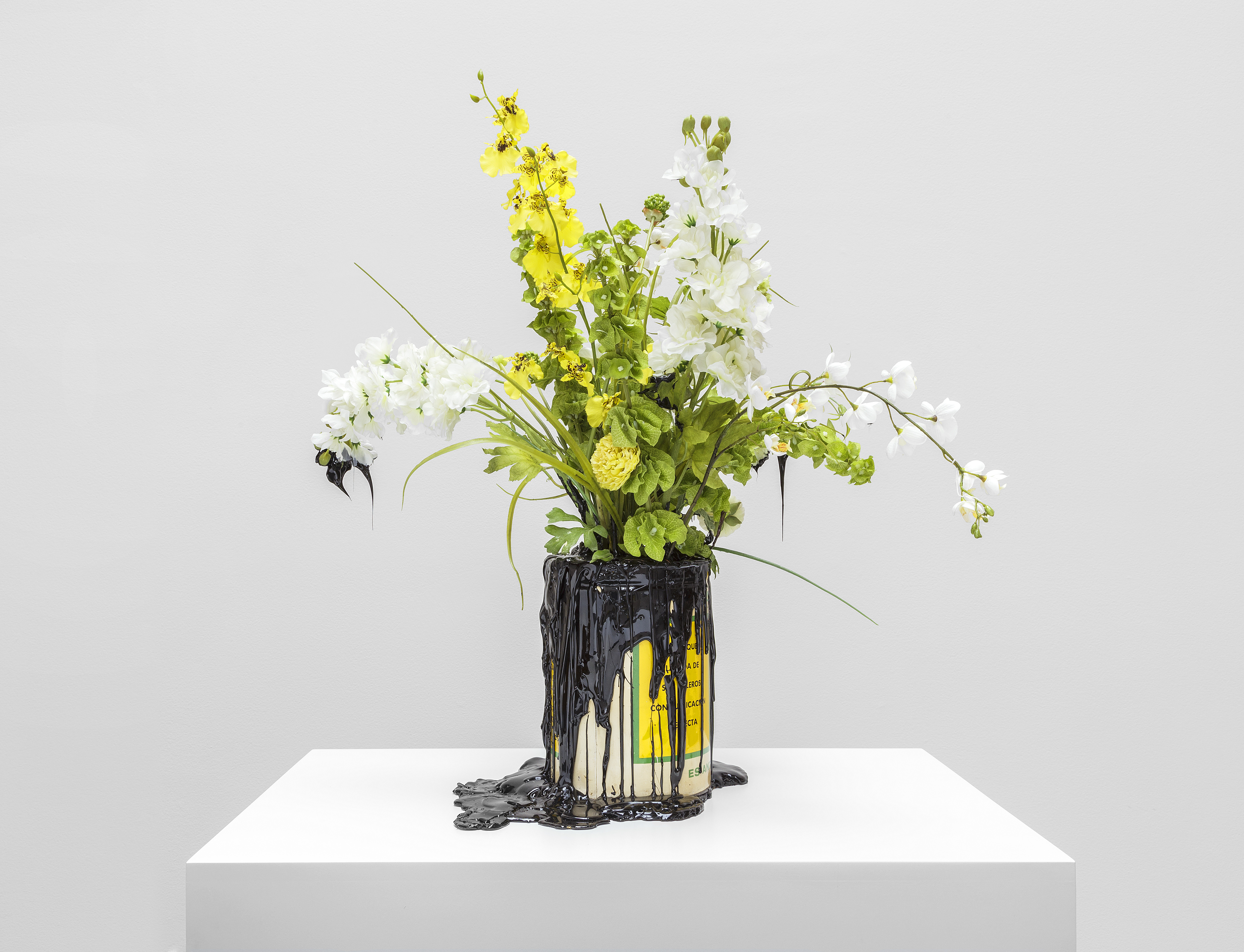
FIGURE 8. Minerva Cuevas, Vase, 2013. Fabric flowers, sand and aluminium can covered with chapopote. 81 x 61 x 47 cm. Image courtesy of the artist and kurimanzutto, Mexico City / New York. Photo by Omar Luis Olguín, 2019.
The infrastructural role of oil in art is also rendered material in Cuevas’ series of landscape paintings dipped in chapopote. Elaborated in a style reminiscent of romanticism, the oil-paint landscapes feature subjects like a rocky shoreline, a beach at sunset, and icebergs. The idyllic subject matter is contraposed with thick, black chapopote applied to the bottom section of the canvas; the tar extends beyond the frame of the canvas in congealed drips (Figure 9). Again, chapopote literally subtends aesthetic representation and reaches beyond the work itself, its thick trickles threatening to touch and invade the gallery walls and floor. The juxtaposition of Cuevas’s subject matter and materials invites the viewer to rethink which forms of nature have been traditionally the subject of aesthetic inquiry, and which have been cordoned off to the purported realm of industry. By bringing the viscous materiality of chapopote to bear on the canvas, elevating it to a heightened space of visibility in the gallery, Cuevas reflexively suggests that oil is the condition of possibility of art. This interpretation is reinforced by Cuevas’s composition, which indexes how oil money and industry has sustained and buoyed cultural infrastructures, and as such should not be cordoned off from the aesthetic experience.
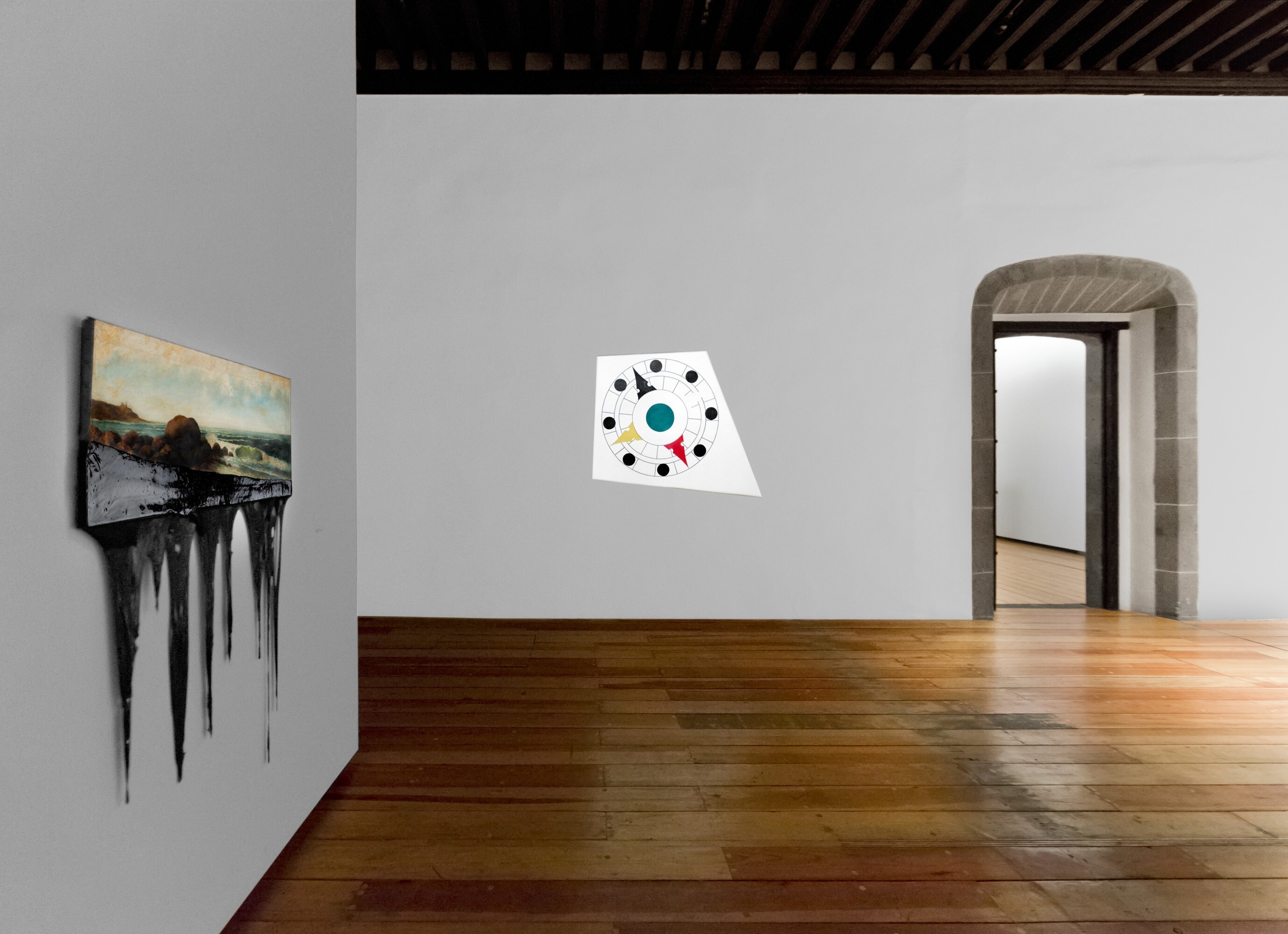
FIGURE 9. Minerva Cuevas, Seascape, 2012 (left, on wall). Oil on canvas on wood board dipped in chapopote. 52 x 67 cm. Image courtesy of the artist and kurimanzutto, Mexico City / New York. Installation view of the exhibition Minerva Cuevas, Museo de la Ciudad de México, 2012.
The reflexive character of Cuevas’s work has been identified by Jean Fisher, who observes that Cuevas’ work is “clearly distinct from oppositional political art activism,” in that it recognizes that the artist and the artwork “cannot stand wholly outside of the dominant reality that formed him or her.” 56 Amy Sara Carroll concurs, writing that “Cuevas generates critique from [deep] within the catacombs of the system.” 57 Cuevas’ formal meditation on art’s entangled relationship with carbon-intensive petro-modernity exemplifies how reflexive tactics reveal art’s ability to simultaneously critique a system with which it is nonetheless imbricated.
Reflexive Extractivist Aesthetics and the Social Hieroglyphic
Taken together, Fritzia Irízar, Débora Delmar, and Minerva Cuevas practice a range of approaches within reflexive extractivist aesthetics, broadly defined as the formal or thematic engagement with art’s implication within extractivist systems. Rather than evoke visual evidence to denounce the consequences of extraction, reflexive interventions query the participation of art in the naturalization of extractivist logics, a habitus in which dreams of growth and development are “underwritten by narratives of abundant resources available for the taking.” 58 Through reflexive interrogation, these artists challenge the extractivist end game—in Gago’s words, “citizenship through consumption”—by tracing consumption back to dispossession, appropriation, and environmental devastation, and considering what it means to be implicated within these practices that are paradigmatic of contemporary capitalism. 59
The complicated question of whether art and energy can or should be “green” is at the heart of reflexive extractivist aesthetics. Delmar’s green juice bar “MINT” underscores how aspirational lifestyles mobilize the discourse of sustainability even as they rely on existent global inequity. Irízar’s Golden Green skeptically mimics recent rebranding that promises the easy implementation of “clean” mining practices to reduce the gold industry’s associated environmental and human impacts, justifications that have been used to greenlight the renewal of concessions. 60 New green technologies are touted as magical fixes, a premise that Irízar dramatizes as perversely reliant on other modes of exploitation. Her artificial diamond made of donated Rarámuri hair illustrates this juxtaposition: a more environmentally sustainable mode of production that is nonetheless charged with horrific racialized inequity.
For each artist, the commodity takes central stage in reflexive praxis. This subject matter signals that the task of demystifying the commodity remains just as relevant today as when Karl Marx first wrote that it was necessary to examine these “trivial,” “transcendent” things to uncover that they are, in reality, “very queer.” 61 In his now well-rehearsed chapter, “The Fetishism of Commodities and the Secret thereof,” Marx underscored that commodities confound our ability to see. They take flight as lively entities, defined by value, detached from their conditions of production. This veiling of the commodity’s provenance is the name of the game in the fine art world, where gold, diamonds, and pearls have long been prized for their aesthetic qualities, displayed in ways that occlude their origins. This hieroglyphic must be reinterpreted to show that value is not inherent to the object itself, but the expression of a social system.
The reflexive turn as I see it is in sync with Adorno’s appreciation for “authentic art that takes on itself the crisis of meaning” rather than unreflexively replicating the values of the unjust system in which it is implicated. 62 Adorno theorized negative dialectics as a method to reflect on the systemic properties of an unjust system. I recur to Adorno because these works of extractivist reflexivity do not proffer solutions. Indeed, the gesture of reflexivity is akin to a state of suspension that is never fully resolved. This lack of resolution might be one reason why some might find the reflexive trend in anti-extractivist art less satisfying. “They offer no out,” this reader might think. While it is true that reflexive aesthetics offers no ready solution to implication, I nonetheless find it to be a generative development in art about extractivism. It is only by fully reckoning with the way in which extractivism is intertwined with the infrastructures of art, and how art in turn has contributed to the naturalization of extractivist logics, that we can begin to reassess how the system might be reconfigured.
Carolyn Fornoff is assistant professor of Latin American studies at Cornell University. Her work examines how Mexican and Central American cultural production responds to environmental crisis. Her first monograph, Subjunctive Aesthetics: Mexican Cultural Production in the Era of Climate Change, was published in 2024 with Vanderbilt University Press. She is also the co-editor of two volumes in the environmental humanities: Timescales: Thinking Across Ecological Temporalities (University of Minnesota Press, 2020) and Pushing Past the Human in Latin American Cinema (SUNY Press, 2021). Fornoff currently cochairs the Committee on Disability Issues in the Profession for the Modern Language Association.
Notes:
-
1 “un cine y territorio libre de minería;” Dení Noya, “Minera Cuzcatlán y Oaxaca FilmFest, crónica de un boicot anunciado,” Avispa Midia, October 12, 2019. https://avispa.org/minera-cuzc...; “responsable de múltiples violaciones a los derechos de pueblos y comunidades indígenas, así como de violaciones a tratados internacionales de derechos humanos,” https://archive.org/stream/dep... BACK
-
2 Jasbir K. Puar and Andrew Ross, “Decolonizing the Museum,” Al Jazeera, July 21, 2021. https://www.aljazeera.com/opinions/2021/7/21/decolonising-the BACK
-
3 It is possible that Oaxaca FilmFest’s decision to partner with Minera Cuzcatlán was a measure of last resort, one among a variety of questionable strategies to recoup lost funds caused by the festival’s cancellation in 2017 in the wake of the deadly earthquake on September 17. Filmmakers who attended the tenth edition of the festival in 2019 complained of high costs, hidden fees, and misleading promises. Hollywood Reporter deemed Oaxaca FilmFest a “pseudo festival” or one that makes false promises of industry exposure to aspiring filmmakers, a radical and sad reversal from the festival’s early promise. As a result of the confluence of filmmaker and local outcry, the tenth edition of Oaxaca FilmFest was its last. See: Katie Kilkenny and Alex Ritman, “‘People Can Be Exploited’: How Below-the-Radar Film Festivals Prey on Struggling Moviemakers,” The Hollywood Reporter, October 31, 2019. https://www.hollywoodreporter.... BACK
-
4 “Liberate Tate,” accessed April 20, 2022, https://liberatetate.wordpress.com/ BACK
-
5 “Strike MOMA,” accessed April 20, 2022, https://www.strikemoma.org/ BACK
-
6 Sam Kench, “How a Respected Film Festival Became a Scam (Allegedly) – The Oaxaca Film Fest Story,” Medium, December 22, 2022, https://brickwallpictures.medi... BACK
-
7 Garnet C. Butchart, “Camera as Sign: On the Ethics of Unconcealment in Documentary Film and Video,” Social Semiotics 23, no. 5 (2013): 682. BACK
-
8 Jason W. Moore, Capitalism in the Web of Life (New York: Verso, 2015). BACK
-
9 Kim Charnley, Sociopolitical Aesthetics: Art, Crisis, and Neoliberalism (London: Bloomsbury, 2021), 83. BACK
-
10 Here I follow scholars of the material turn in media studies. See for instance: Nadia Bozak, The Cinematic Footprint: Lights, Camera, Natural Resources (New Brunswick: Rutgers University Press, 2011), Jussi Parikka, A Geology of Media (Minneapolis: University of Minnesota Press, 2015), and Siobhan Angus, Camera Geologica (Durham: Duke University Press, forthcoming), among many others. I am also in implicit conversation with Héctor Hoyos’ prompt to scholars to think about world literature in tandem with its global social relations of production and real-world entanglements in the final chapters and conclusion of Things with a History: Transcultural Materialism and the Literatures of Extraction in Contemporary Latin America (New York: Columbia University Press, 2019). BACK
-
11 Michael Rothberg, The Implicated Subject: Beyond Victims and Perpetrators (Stanford: Stanford University Press, 2019), 12. BACK
-
12 Douglas Starr, “Just 90 companies are to blame for most climate change, this ‘carbon accountant’ says,” Science, August 25, 2016, https://www.science.org/conten... BACK
-
14 Rothberg, The Implicated Subject, 12. This proposal resonates with Marisol de la Cadena’s theorization of the uncommons or “a commons through divergence.” Marisol de la Cadena, “Uncommoning Nature,” e-flux 65 (2015), https://www.e-flux.com/journal... BACK
-
15 Imre Szeman and Jennifer Wenzel, “What do we talk about when we talk about extractivism?” Textual Practice 35, no. 3 (2021): 506. BACK
-
16 Alberto Acosta, “Aporte al debate: El extractivismo, como categoría de saqueo y devastación,” FIAR 9, no. 2 (2016): 25-33. BACK
-
17 Marisol de la Cadena, Earth Beings: Ecologies of Practice Across Andean Worlds (Durham: Duke University Press, 2015), 272; Gisela Heffes, “Undisciplined Knowledge: Indigenous Activism and Decapitation Resistance,” in Pushing Past the Human in Latin American Cinema, eds. Carolyn Fornoff and Gisela Heffes (Albany: SUNY Press, 2021), 327-343. BACK
-
18 For a great take on the relationship between reading, writing, publishing, and the global supply chain, see Héctor Hoyos, “Global Supply Chain Literature vs. Extractivism,” in Re-Mapping World Literature, eds. Gesine Müller, Jorge J. Locane, and Benjamin Loy (Berlin: DeGruyter, 2018): 33-44. BACK
-
19 Philip Hüpkes and Gabriele Dürbeck, “Aesthetics in a Changing World: Reflecting the Anthropocene Condition through the Works of Jason deCaires Taylor and Robert Smithson,” Environmental Humanities 13, no. 2 (2021): 414-432. BACK
-
20 Maristella Svampa, “Commodities Consensus: Neoextractivism and Enclosure of the Commons in Latin America,” South Atlantic Quarterly 114, no. 1 (2015): 65-82. BACK
-
21 Darcy Tetreault, “The New Extractivism in Mexico: Rent Redistribution and Resistance to Mining and Petroleum Activities,” World Development 126 (February 2020): 104714-104723. BACK
-
22 Todd Miller, Empire of Borders: The Expansion of the US Border around the World (New York: Verso, 2019): 168-169. BACK
-
23 Dawn Paley, Drug War Capitalism (Oakland: AK Press, 2014). BACK
-
24 Rent-capturing efforts were begun by AMLO’s predecessor Enrique Peña Nieto, but more widely implemented by AMLO. Tetreault, “The New Extractivism in Mexico.” BACK
-
25 Tetreault, “The New Extractivism in Mexico,” 104720. BACK
-
26 Verónica Gago, Neoliberalism from Below: Popular Pragmatics and Baroque Economies, trans. Liz Mason-Deese (Durham: Duke University Press, 2017), 171. BACK
-
28 Charlotte Rogers, Mourning El Dorado: Literature and Extractivism in the Contemporary American Tropics (Charlottesville: University of Virginia Press, 2019), 7. BACK
-
29 Eduardo Gudynas, “Extractivisms: Tendencies and Consequences,” in Reframing Latin American Development, eds. Ronaldo Munck and Raúl Delgado Wise (London: Routledge, 2018), 74. BACK
-
30 Irmgard Emmelhainz, La tiranía del sentido común: La reconversión neoliberal de México (México: Paradiso, 2016). BACK
-
31 “porque nos importa.” “Fritzia Irízar: Golden Green / Greening Gold,” Artishock: Revista de Arte Contemporáneo, October 18, 2016, https://artishockrevista.com/2016/10/18/fritzia-irizar-golden-green-greening-gold/ BACK
-
32 Didi Stoltenborg and Rutgerd Boelens, “Disputes over land and water rights in gold mining: the case of Cerro de San Pedro, Mexico,” Water International 41, no. 3 (2016): 447-467. BACK
-
33 “El mundo del arte en definitiva no está al margen de esta ímpetu por la avaricia, definitivamente no, yo creo que ninguno de nosotros somos ajenos a esto, todos somos cómplices del estado en el que se encuentra nuestra sociedad, que vivimos en una sociedad absolutamente irracional, frívola y profundamente irrespetuosa, en la que difícilmente podremos cambiar los hábitos.” “Fritzia Irízar: Golden Green – Greening Gold,” Revista Gatopardo, September 23, 2016, https://gatopardo.com/arte-y-c.... BACK
-
34 Claudio Garibay Orozco and Alejandra Balzaretti Camacho, “Goldcorp y la reciprocidad negativa en el paisaje minero de Mezcala, Guerrero,” Desacatos 30 (2009): 92. BACK
-
35 “Fritzia Irízar: Golden Green – Greening Gold,” Revista Gatopardo. BACK
-
36 Víctor M. Toledo, “Ambientalismo y neoliberalismo en México,” La Jornada, September 11, 2018, https://www.jornada.com.mx/201... BACK
-
37 Matthew Vitz, A City on a Lake: Urban Political Ecology and The Growth of Mexico City (Durham: Duke University Press, 2018), 232. BACK
-
38 Christina Noriega, “The Green Erasure of Indigenous Life,” NACLA, May 6, 2020. https://nacla.org/news/2020/05/06/green-erasure-indigenous-life BACK
-
39 Karl Marx, Capital: Volume One, trans. Edward Aveling and Samuel Moore (Dover, 2019), 49. BACK
-
40 For more on cultural extractivism, see Ramón Grosfoguel, “Del extractivismo económico al extractivismo epistémico y ontológico,” Revista Internacional de Comunicación y Desarrollo 1, no. 4 (2016): 33-45, and Amanda M. Smith, Mapping the Amazon: Literary Geography After the Rubber Boom (Liverpool: Liverpool University Press, 2021). BACK
-
41 Andrea Torreblanca, “Naturaleza de la imitación,” Tierra Adentro, https://www.tierraadentro.cultura.gob.mx/naturaleza-de-imitacion/ BACK
-
42 According to Maya legend, the princess Yits Kaan fell in love with Ek’Kan, a warrior prince beneath her station. Her father prohibited their union, and condemned Ek’Kan to death. To save her lover from this fate, with the help of the Moon Goddess the princess transformed him into a gold-hued beetle—the Maquech (Zopherus chilensis) or escarabajo yucateco. She bedecked him with precious stones and fastened a thin gold chain to his body, so that she could wear him close to her heart. Ever since, the Maquech has been a regional adornment, a “living jewel” worn as a brooch or amulet by young women in love. In the early twentieth century, local businessmen saw the opportunity to transform the living jewel into a tourist attraction. By the second half of the century, it was a widely known and sought-after souvenir sold in markets in Mérida—where Irízar currently lives and works, although she is originally from Culiacán, Sinaloa. The Maquech is thus an item that indexes fashion, strangeness, beauty, exoticism, nature, and indigeneity all in one. Every year, insect gatherers known as Maquecheros from the Maya community in Huhí collect the Maquech beetle from decomposing wood in a nearby forest and sell them to local artisans who festoon the insect with rhinestones to be sold to tourists. About 4,000 Maquech beetles are sold as living jewels each year; as demand has increased, the beetle has been overhunted. This, along with habitat destruction in Huhí, has made the Maquech more difficult to find, prompting locals to worry about the future of this ancestral practice. Jesús Miss-Domínguez, Virginia Meléndez-Ramírez and Miguel Pinkus-Rendón, “Etnoecología del escarabajo Maquech (Zopherus chilensis Gray, 1832) en una comunidad de Yucatán México,” Revista Etnobiología 15, no. 1 (April 2017): 52. BACK
-
43 Fritzia Irízar, “Sin título (Makech)” video, Mazatlanica exhibit, Museo Universitario de Arte Contemporáneo 2019, https://muac.unam.mx/exposicio.... BACK
-
44 Marcela Torres, “Fundidora: Landlocked?” in Incurable-Image: Curating Post-Mexican Film and Media Arts, Tarek Elhaik (Edinburgh: Edinburgh University Press, 2016), 151. BACK
-
45 Érika Ramírez, “Coca Cola acapara en México 28.2 millones de m3 de agua,” Contralínea, March 9, 2022, https://contralinea.com.mx/coca-cola-acapara-en-mexico-28-2-millones-de-m3-de-agua/ BACK
-
46 See Raúl Pacheco-Vega, “Agua embotellada en México: de la privatización del suministro a la mercantilización de los recursos hídricos,” Espiral 22, no. 63 (2015): 221-263. BACK
-
47 “The FEMSA Biennial will hold its 14th edition in Michoacán,” Press Release, January 14, 2020. https://www.femsa.com/en/press... BACK
-
48 “FEMSA Foundation,” accessed April 20, 2022, https://www.nature.org/en-us/about-us/who-we-are/how-we-work/working-with-companies/companies-investing-in-nature1/femsa/ BACK
-
49 Valeria Luiselli, The Story of My Teeth, translated by Christina MacSweeney (Minneapolis: Coffee House Press, 2015), 10. BACK
-
50 Ruth G. Ornelas, “Organized Crime in Michoacán: Rent-Seeking Activities in the Avocado Export Market,” Politics and Policy 46, no. 5 (2018): 773. BACK
-
51 Alexis Shotwell, Against Purity: Living Ethically in Compromised Times (Minneapolis: University of Minnesota Press, 2016), 8. Complicity is complicated. First and foremost, the ecological footprint of Mexican arts and culture is far lower than that of its global north counterparts. This mirrors broader trends in which the average CO2 footprint of a person in the United States is four times greater than that of someone in Mexico. Zooming out, the difference is starker. To date, the U.S. has cumulatively produced 400 billion tons of CO2, twenty times that of Mexico’s 20 billion tons. Hannah Ritchie and Max Roser, “Mexico: CO2 Country Profile,” Our World in Data, accessed April 20, 2022, https://ourworldindata.org/co2... BACK
-
52 Carolyn Fornoff, “Mexican Cinema as Petrocinema,” Studies in Spanish and Latin American Cinema 18, no. 3 (2021): 377-387. BACK
-
53 Germán Vergara, Fueling Mexico: Energy and Environment, 1850-1950 (Cambridge: Cambridge University Press, 2021), 5. BACK
-
55 “Cultura y Ciencia, con presupuestos bajos en 2021,” El Universal, November 12, 2020, https://www.eluniversal.com.mx/cultura/cultura-y-ciencia-con-presupuestos-bajos-en-2021 BACK
-
56 Jean Fisher, “Minerva Cuevas and the Art of Parasitic Intervention,” Afterall 27 (Summer 2011): 59. BACK
-
57 Amy Sara Carroll, Remex: Toward an Art History of the NAFTA Era (Austin: University of Texas Press, 2017), 96. BACK
-
58 Justin Parks, “The Poetics of Extractivism and the Politics of Visibility,” Textual Practice 35, no. 3 (2021): 354. BACK
-
60 “AMLO se compromete a revisar contratos de periodo neoliberal y llama a mineras canadienses a explotar de manera limpia,” Proceso, March 18, 2019, https://www.proceso.com.mx/nac... BACK
-
62 Theodor W. Adorno, Aesthetic Theory, trans. Robert Hullot-Kentor (London: Bloomsbury, 1997), 210. BACK
